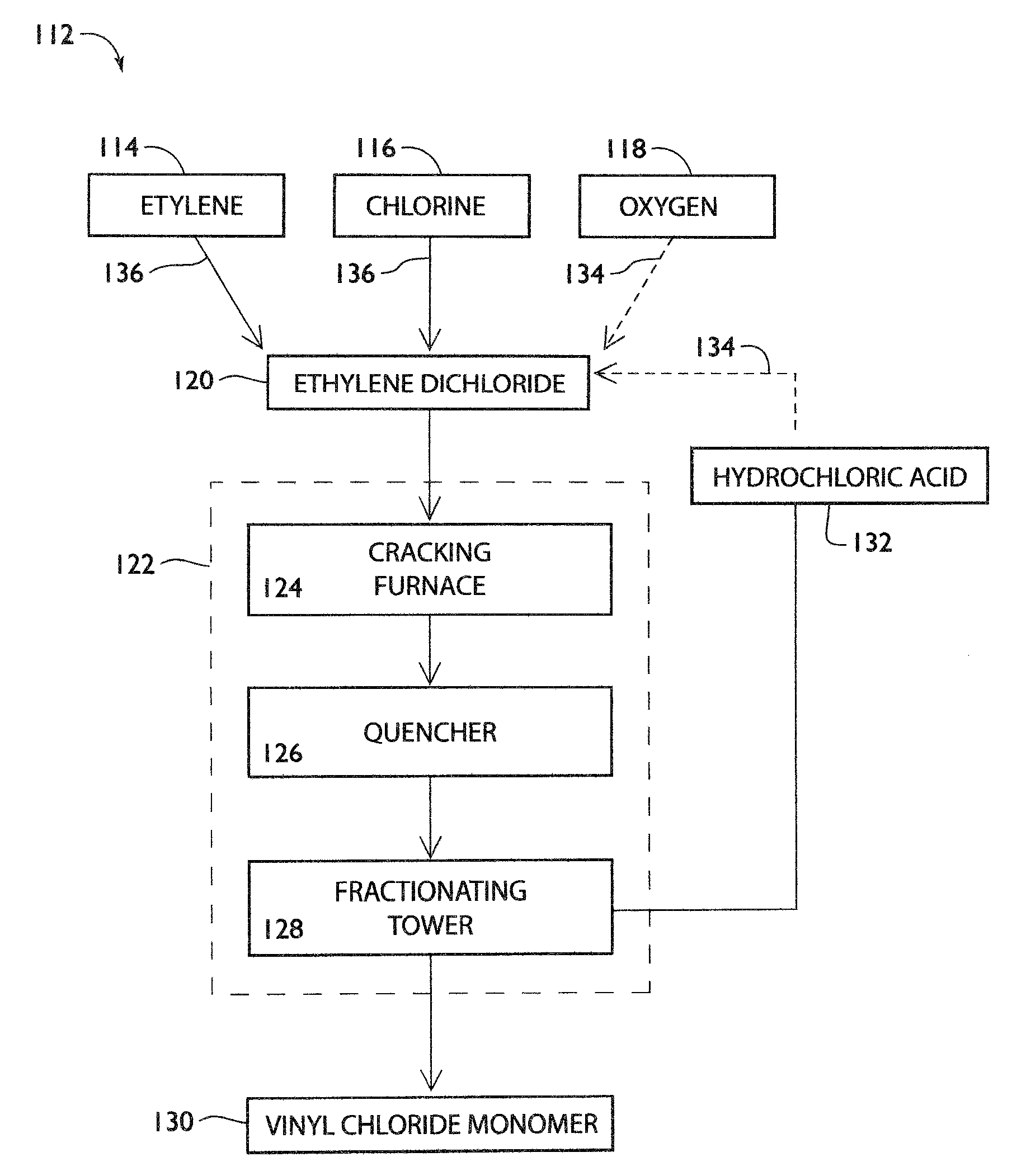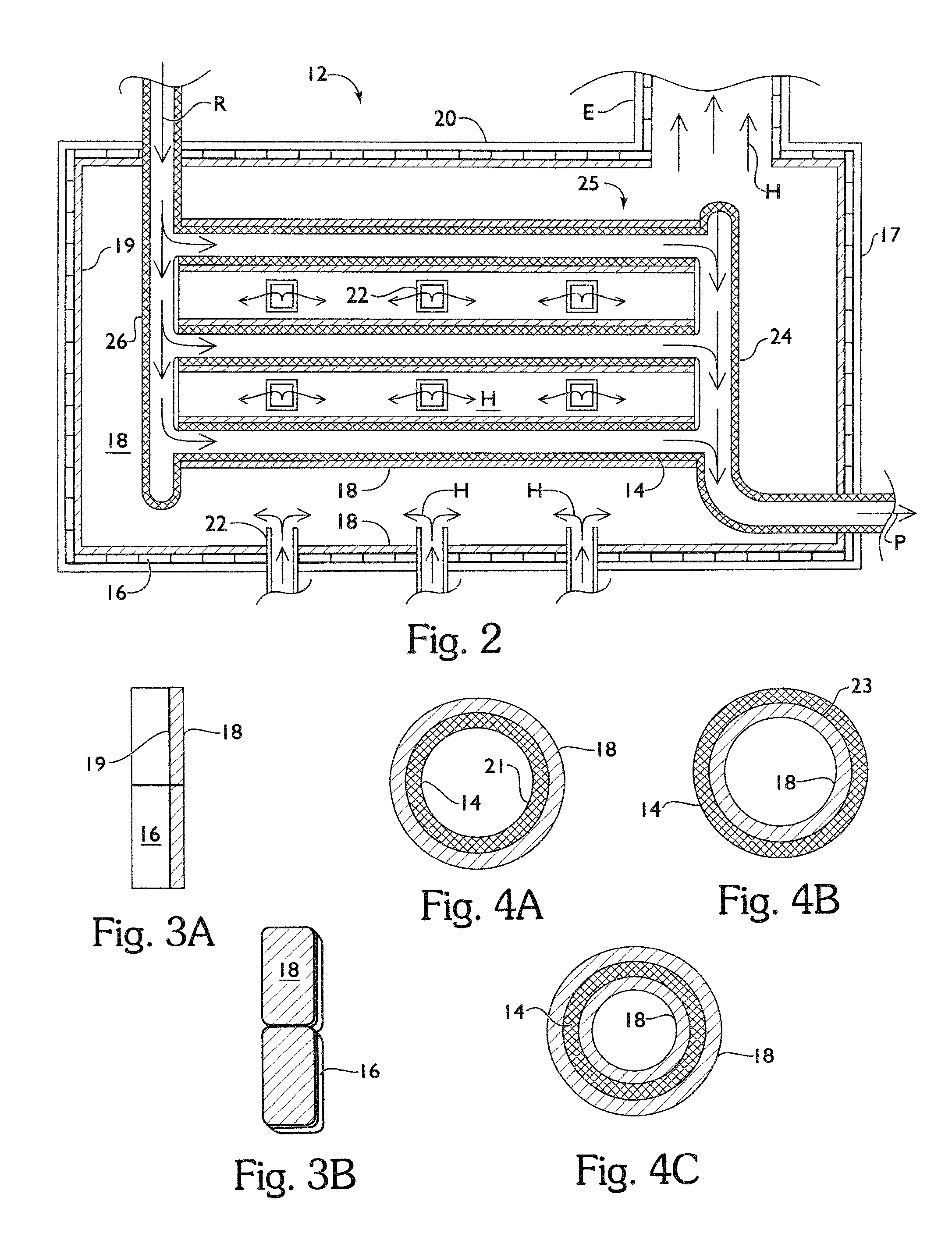Process and apparatus for production of vinyl chloride monomer
a technology process, which is applied in the field of process and equipment for the production of vinyl chloride monomer, can solve the problems of reduced structural life of furnace tubes, reduced production and facility downtime, and increased fuel costs, so as to reduce production and equipment downtime and reduce production costs. , the effect of increasing the amount of continuous production runs
- Summary
- Abstract
- Description
- Claims
- Application Information
AI Technical Summary
Benefits of technology
Problems solved by technology
Method used
Image
Examples
Embodiment Construction
[0035]The block diagram 112 of FIG. 1 details the process and apparatus for producing VCM from EDC. In the direct chlorination process 136, ethylene 114 and chlorine 116 are reacted together at 136 to form EDC 120. Alternatively or additionally, in the oxygen chlorination process 134, oxygen 118 is reacted with HCl 132, with steam, to form EDC 120. Vaporized EDC 120 is dried and typically passed over a catalyst packed in stainless steel tubes 14, shown in FIGS. 2 and 4A through 6C that are directly heated in a cracking furnace 124. The hot effluent gases are quenched in a quencher 126 and the condensed gases fed into a fractionating tower 128 operating under pressure to separate the product VCM 130 from HCl 132 and excess EDC, not shown in FIG. 1 but the excess EDC may be recycled in the same fashion as the HCl 132. The product VCM 130 is formed by condensing the vapors in a water condenser. The VCM 130 is then filtered and sent to either a storage tank for further processing to pro...
PUM
| Property | Measurement | Unit |
|---|---|---|
| emissivity | aaaaa | aaaaa |
| emissivity | aaaaa | aaaaa |
| emissivity | aaaaa | aaaaa |
Abstract
Description
Claims
Application Information
 Login to View More
Login to View More - R&D
- Intellectual Property
- Life Sciences
- Materials
- Tech Scout
- Unparalleled Data Quality
- Higher Quality Content
- 60% Fewer Hallucinations
Browse by: Latest US Patents, China's latest patents, Technical Efficacy Thesaurus, Application Domain, Technology Topic, Popular Technical Reports.
© 2025 PatSnap. All rights reserved.Legal|Privacy policy|Modern Slavery Act Transparency Statement|Sitemap|About US| Contact US: help@patsnap.com



